When flying over areas with clear weather, if I can secure a window seat for free or at a reasonable cost, I usually opt for it to enjoy the view. This post sums up some of my personal experiences and tips. I’ll use solo adult economy passengers as an example here to keep things simple. Therefore, this may not be particularly helpful for those who fly private, first class, or business class. If you have specific travel needs or you’re traveling in a group, it’s best to consider your situation separately as well.
Window seat for scenic views
While the scenery may be great, which specific window seats on the aircraft offer the best views? If we only look at it from the scenery perspective and ignore other factors such as restroom odors, turbulence effects, and survival rates in accidents:
Front vs. Back
- ✅ ✅ Window seats at the back often have unobstructed views as they are located completely behind the wings and engines.
- ✅ Window seats at the front have neither wing nor engine to obstruct the view, providing excellent views. However, these are often in premium economy or business class areas, so we need to consider the extra cost.
- 😐 Seats in the middle of the aircraft, including those near emergency exits, often have obstructed views because of the wings or engines, allowing only glimpses of the scenery during takeoff or landing.
- For small propeller aircraft, if possible, try to avoid seats near the propellers.
Left vs. Right
Let’s use a single-aisle aircraft with a 3-3 layout as an example: seats on the left side when facing forward are labeled as A, and those on the right side are labeled F. Other layouts follow similar principles.

A) For those who don’t have specific landmarks in mind to see:
I’d recommend choosing the shady side during daytime flights so the sun won’t dazzle your eyes. The view outside the window will be well-lit, and scratches on the window won’t interfere with camera focus.
- 1. For north-south flights, if you wish to view ground landscapes, choose west-facing window seats in the morning (A for northbound, F for southbound), and east-facing ones in the afternoon (F for northbound, A for southbound). If you are interested in seeing sunrise or sunset through the clouds without focusing on ground scenery, choose the opposite sides. The same applies in the Southern Hemisphere.
- 2. For east-west flights, consider the position of the sun (as shown in the table below), along with the flight direction and latitude of the flight path, to determine the best side:
- In non-tropical regions of the Northern Hemisphere throughout most of the year, seats on the north side are optimal for lighting (A for eastbound, F for westbound). The opposite applies in the Southern Hemisphere.
- During summer sunrise and sunset in the Northern Hemisphere, as well as throughout the day in tropical regions, seats on the south side are preferable for viewing ground landscapes (seat F for eastbound, A for westbound). The opposite applies in the Southern Hemisphere.

Here’s another way to summarize- for optimal viewing of ground scenery with favorable sunlight and no specific location preference:
- Pick seat A when:
- north-bound in the morning;
- south-bound in the afternoon;
- east-bound for scenarios marked in yellow background in the table above;
- west-bound for scenarios marked in blue background in the table above.
- Pick seat F when:
- south-bound in the morning;
- north-bound in the afternoon;
- west-bound for scenarios marked in yellow background in the table above;
- east-bound for scenarios marked in blue background in the table above.
B) For flights with specific scenic requirements:
When we want to see a specific landmark during a daytime flight, I’d look up the recent flight path of the same route and compare it to the landmark’s location. If the landmark is to the left of the flight path, choose seat A; if to the right, choose F. Additionally, if the highlight of the view is going to be near airports during takeoff and landing, pay attention to the direction of the airport’s runways.
A couple examples from my past trips
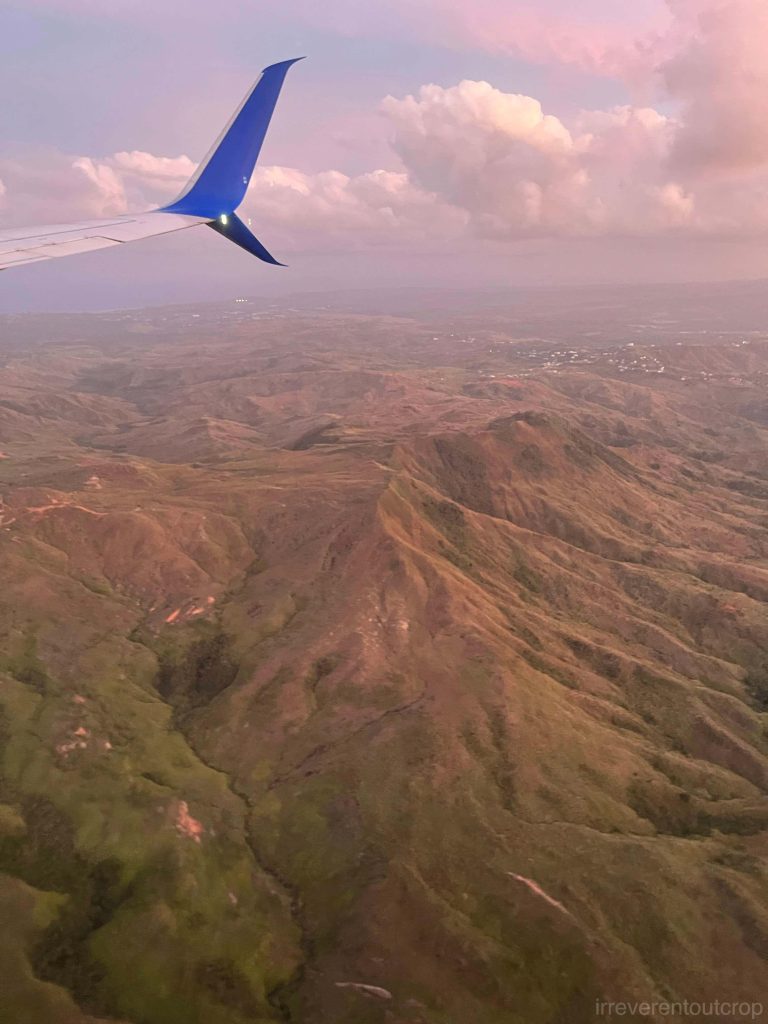
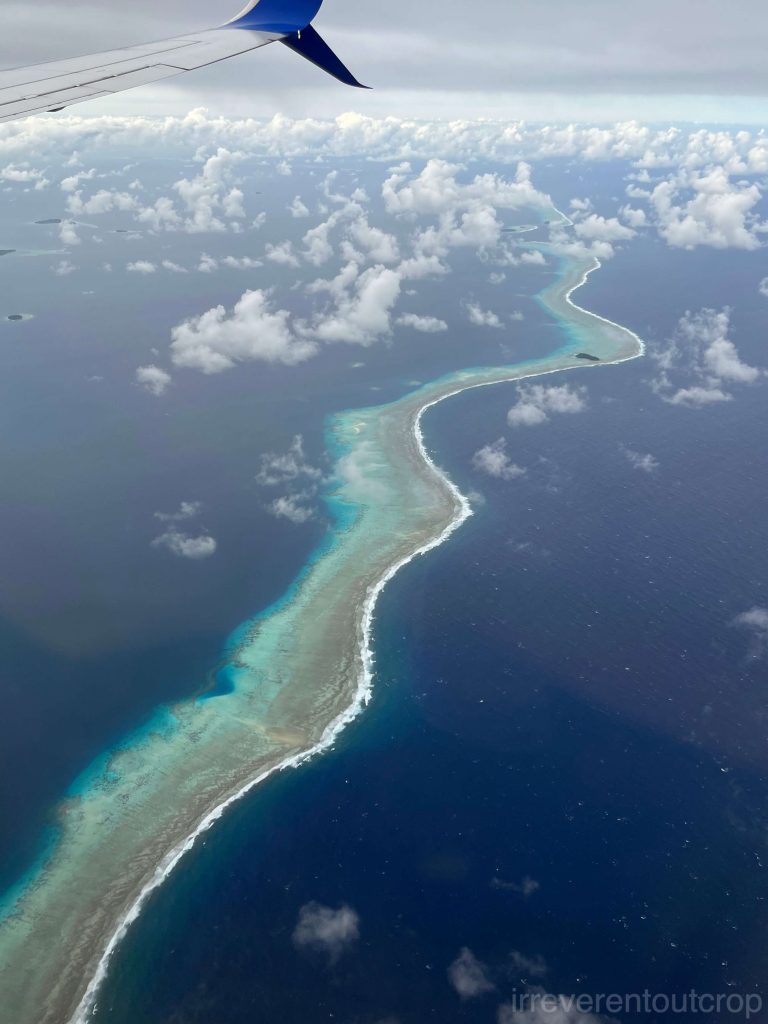
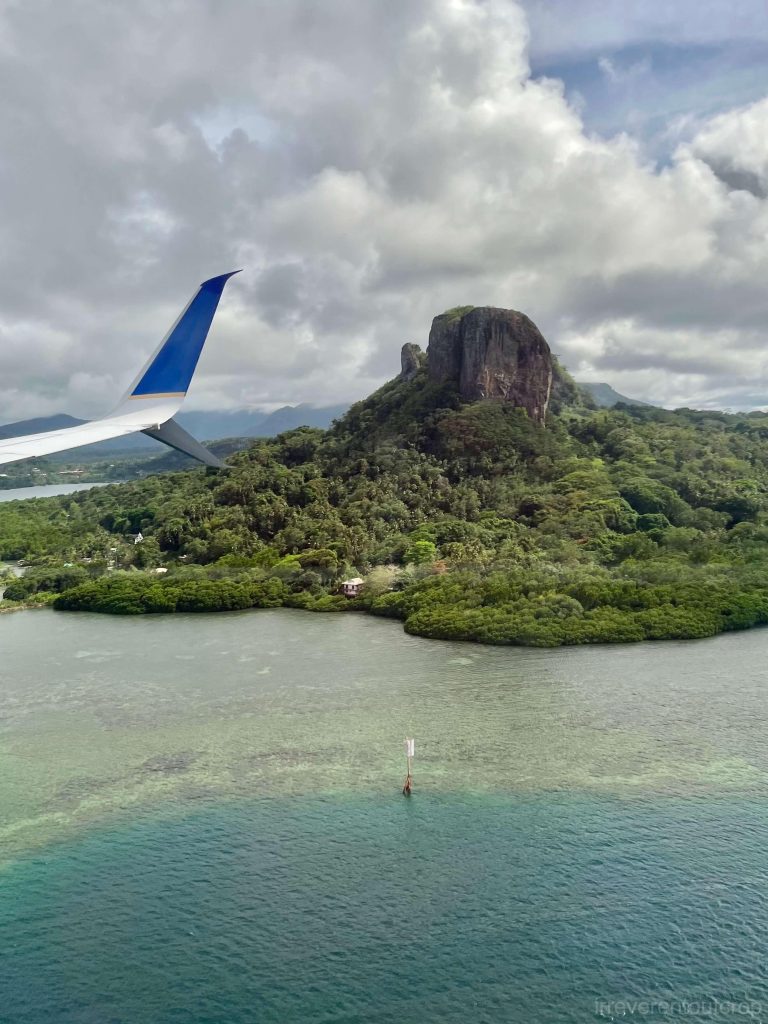
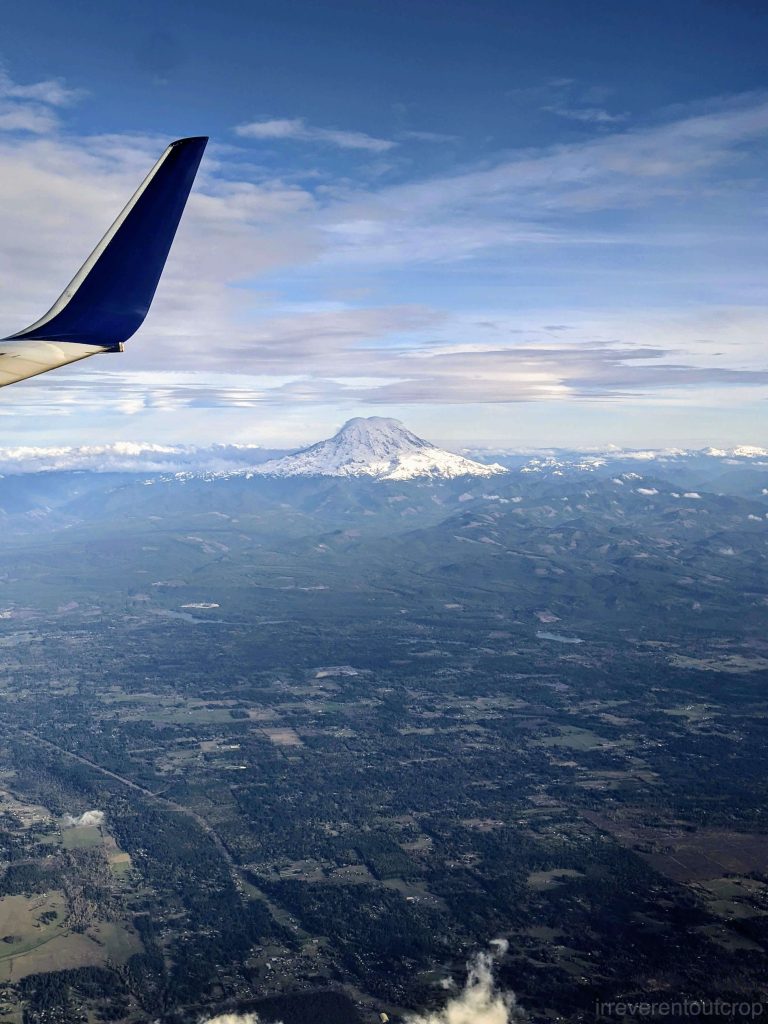
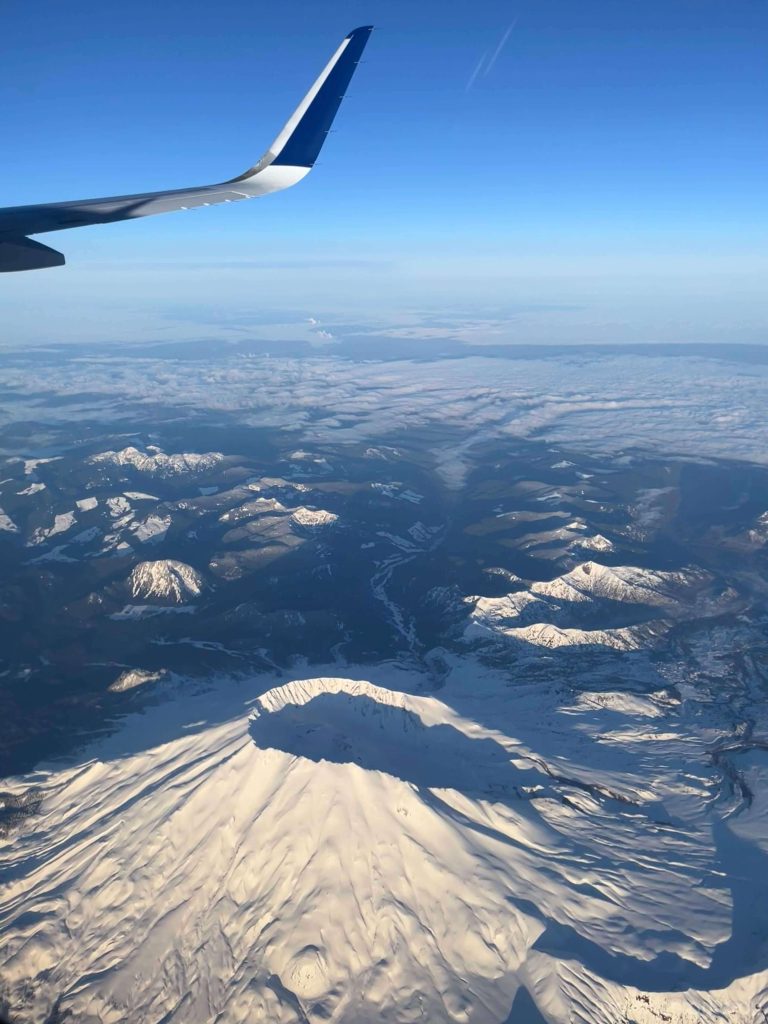
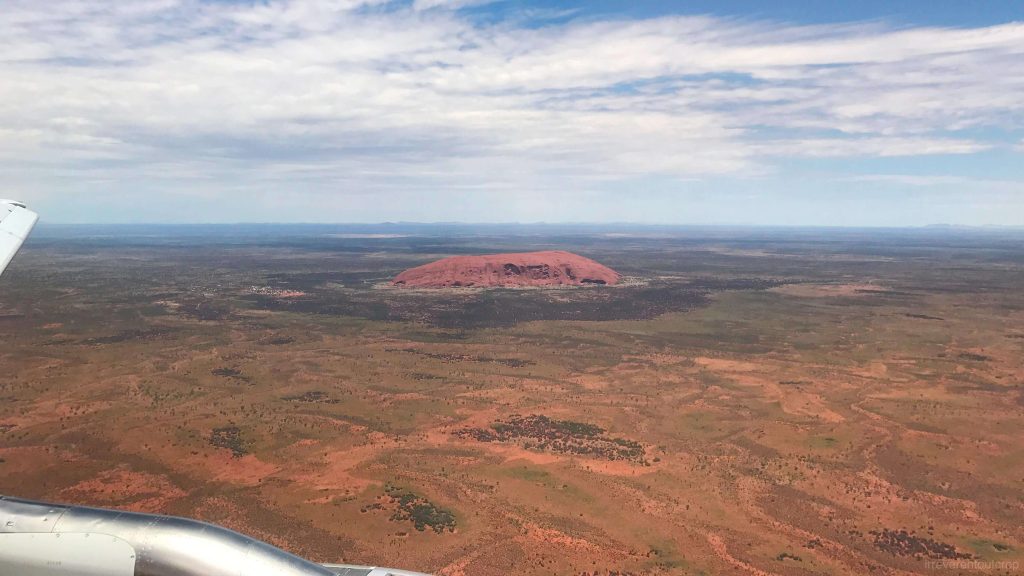
Northern lights
For night flights near the Arctic Circle (<70° N) during aurora seasons or solar storms, a north-facing window seat (A for eastbound, F for westbound) might offer some aurora viewing. For example, routes between the US East Coast and Asia, US West Coast and Europe, or flights to/from Alaska. Northern lights typically occur on the northern side.
For flights beyond 70° N where auroras occur along the route, both sides would be fine.
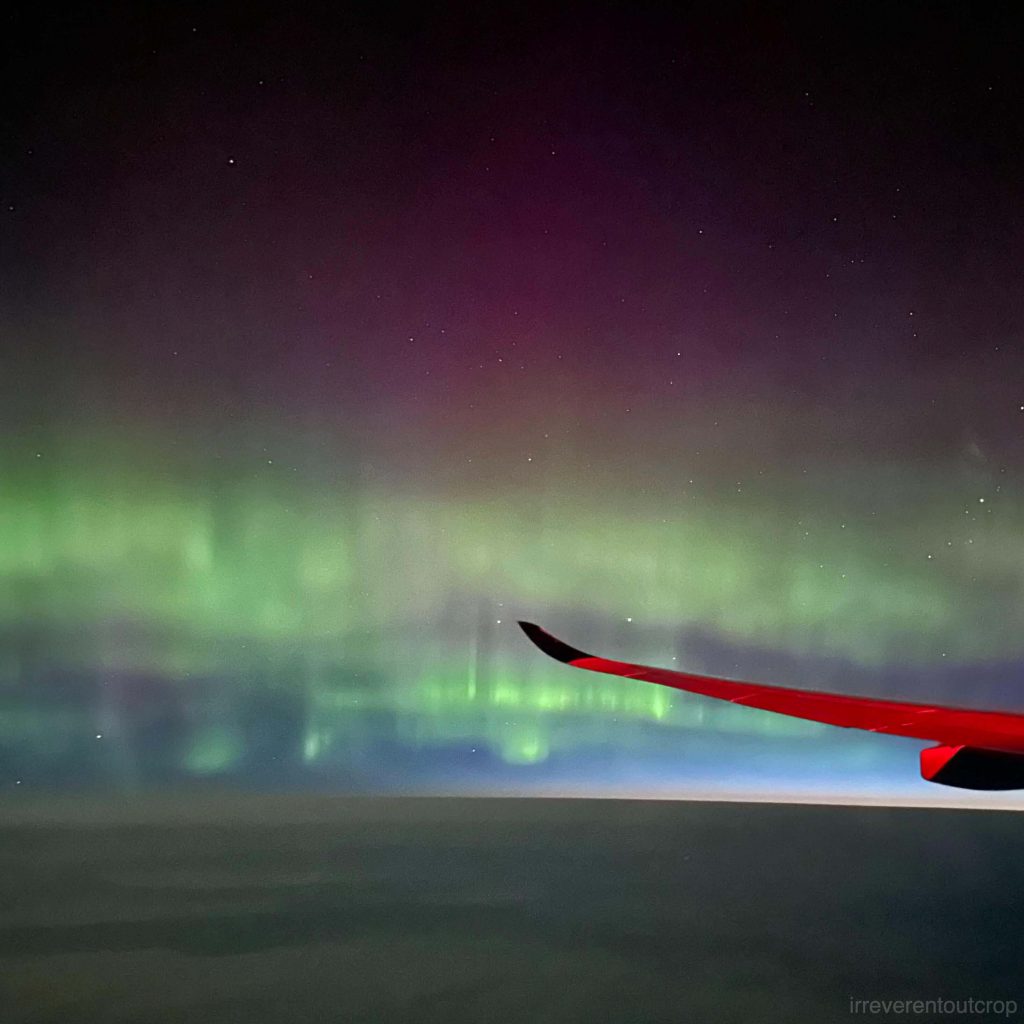
What kind of landscapes are easier to see on a nice day
I would consider the most scenic generally to be natural landscapes of significant scale with large visual contrasts. For example, islands, major rivers, mountains, coastlines, deserts, glaciers, and icebergs. For these inherently impressive landscapes, even some cloud or fog would not blur them too much.

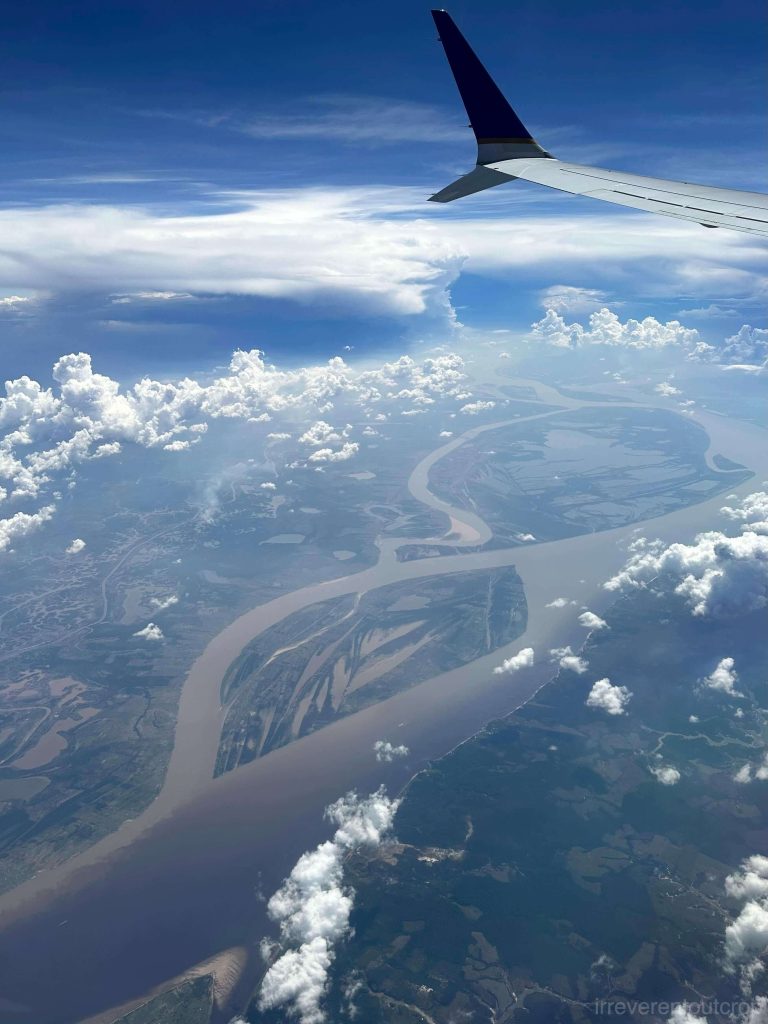


Next are cities, large-scale engineering structures (e.g. city walls, bridges, etc.), and smaller natural landscapes like lakes and hills. Generally speaking, these are clearer to see during takeoff and landing. Identifying them from cruising altitudes poses greater difficulty.

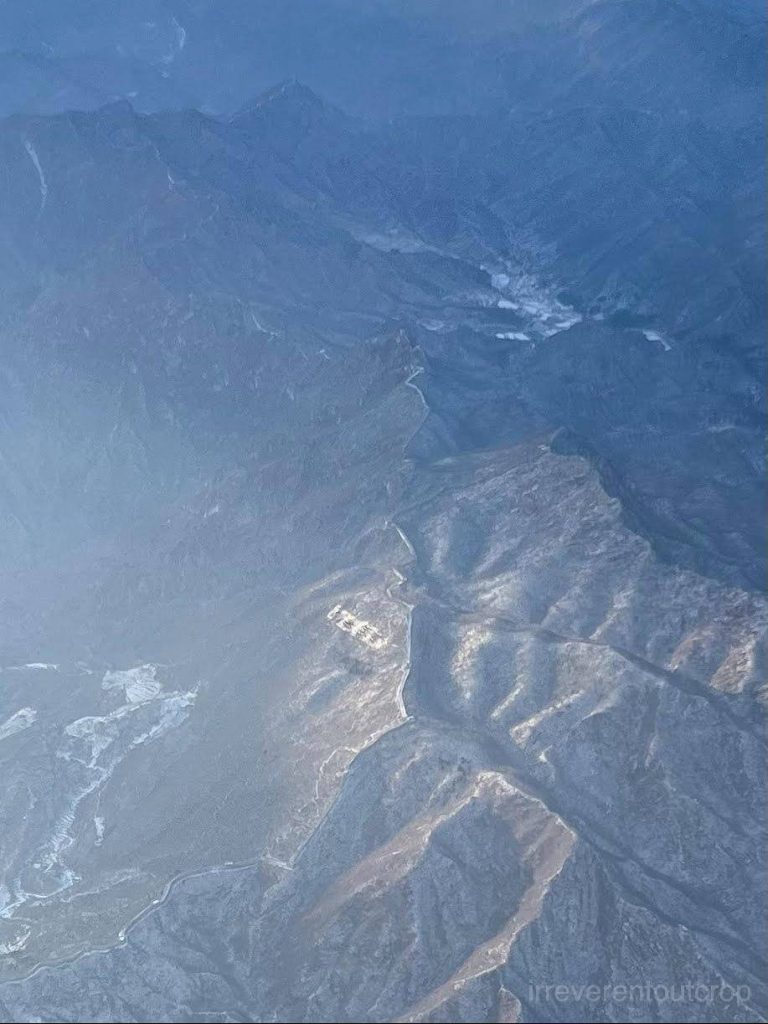
Plains and farmlands, extensive flat forests, small towns, and similar landscapes have minimal visual contrast and are generally less visually striking.
Natural landscapes at night are typically pitch dark, with only larger cities visible.

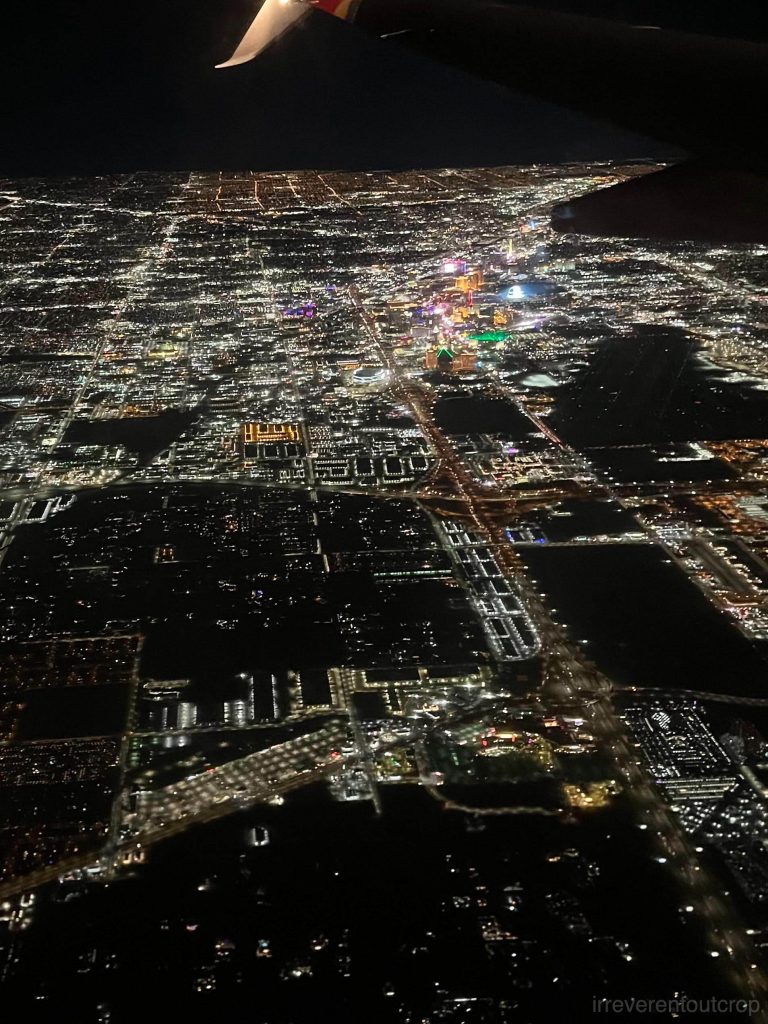
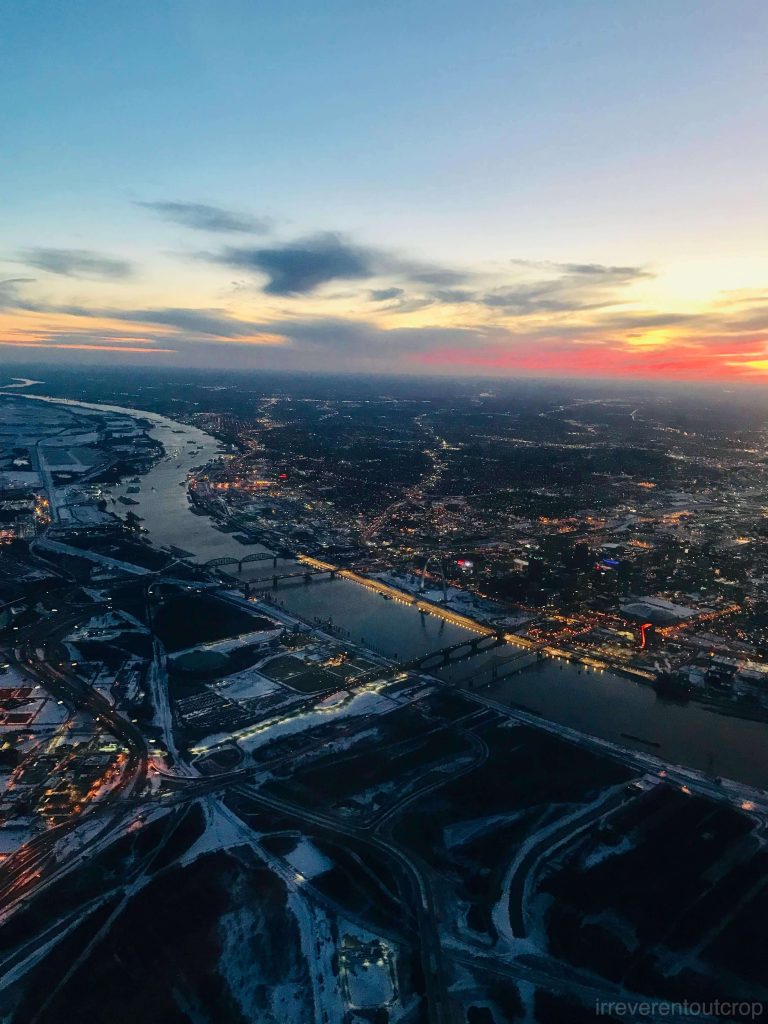
When flying over vast oceans, it’s wise to abandon the hope of sightseeing. It might make more sense to just prioritize picking an aisle seat for easier access in and out.
Aisle seats for convenience
Occasionally when I see equally priced available seating options, I’d choose an aisle seat when
- The flights are long and mostly above ocean. E.g. between US west coast and Asia, US east coast and Europe, etc.
- Flying over areas mostly cloudy all year round
- Flying over mostly flat farmlands
- It’s a night time flight
Are all aisle seats the same? Not quite- some actually get disturbed more often than others. Let’s look at some different scenarios:
Single-aisle aircrafts (simple scenario)
- For symmetrical layouts (e.g. 1-1, 2-2, 3-3 layouts), aisle seats on either side of the aisle are the same;
- For asymmetrical layouts: If the layout is 1-2, choose the individual seat, which has both a window and aisle access. If it’s a 2-3 layout (see illustration below), pick the aisle seat on the two-seat side (seat C). Since C only blocks one person while D blocks two, the disturbance frequency at C is potentially 50% lower than at D (ignoring individual behavior differences).
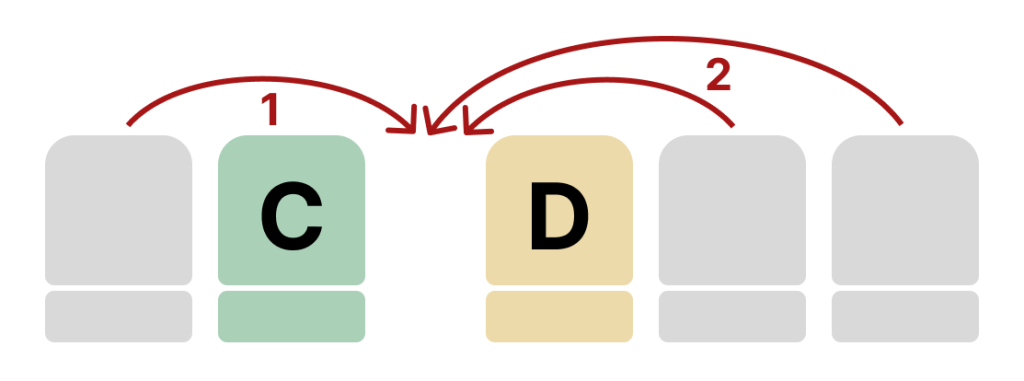
Twin-aisle aircrafts (using left aisle’s seats C and D as example)
3-3-3 layout: pick D. The frequency of getting disturbed is only 25% for seat C. In reality, people of seats E and F might be traveling together, and it’s optimistically assumed that most passengers are rational so the person of seat E would exit through the F side, with no disturbance to seat D at all.

3-4-3 layout: still pick D. Seat C is blocking two people, while D only blocks one (seat E). The person in seat F usually exits via the right aisle, potentially disturbing the person in seat G. Therefore, the disturbance frequency for seat D is 50% of seat C’s.

2-4-2 seating layout: both seats C and D are blocking one person, so they have the same disturbance frequency. However, in practice, the seat next to D is typically a middle seat, which is more likely to be left empty when the flight isn’t fully booked compared to the window seat A next to C. Therefore, if there are no scenic views or it’s going to be a nighttime flight, I would prefer seat D over C. If there might be some scenery and considering the convenience of being near the window to occasionally take photos, seat C could be nice.

Additional notes
A few other special situations on flight routes I have experienced:
- Prevailing westerlies dominate the 40° to 60° latitude zone (same in both hemispheres). Therefore, flights traveling eastward at around 40° N will take a more northern route to take advantage of the westerlies, while westbound flights will fly further south to avoid them. This results in significant deviations from the great circle route, which is the shortest path between two points on a sphere. A good reference website for this is www.gcmap.com.
- North Korean airspace is completely closed to external access, resulting in significant detours for flights between Northeast China and Japan or South Korea.
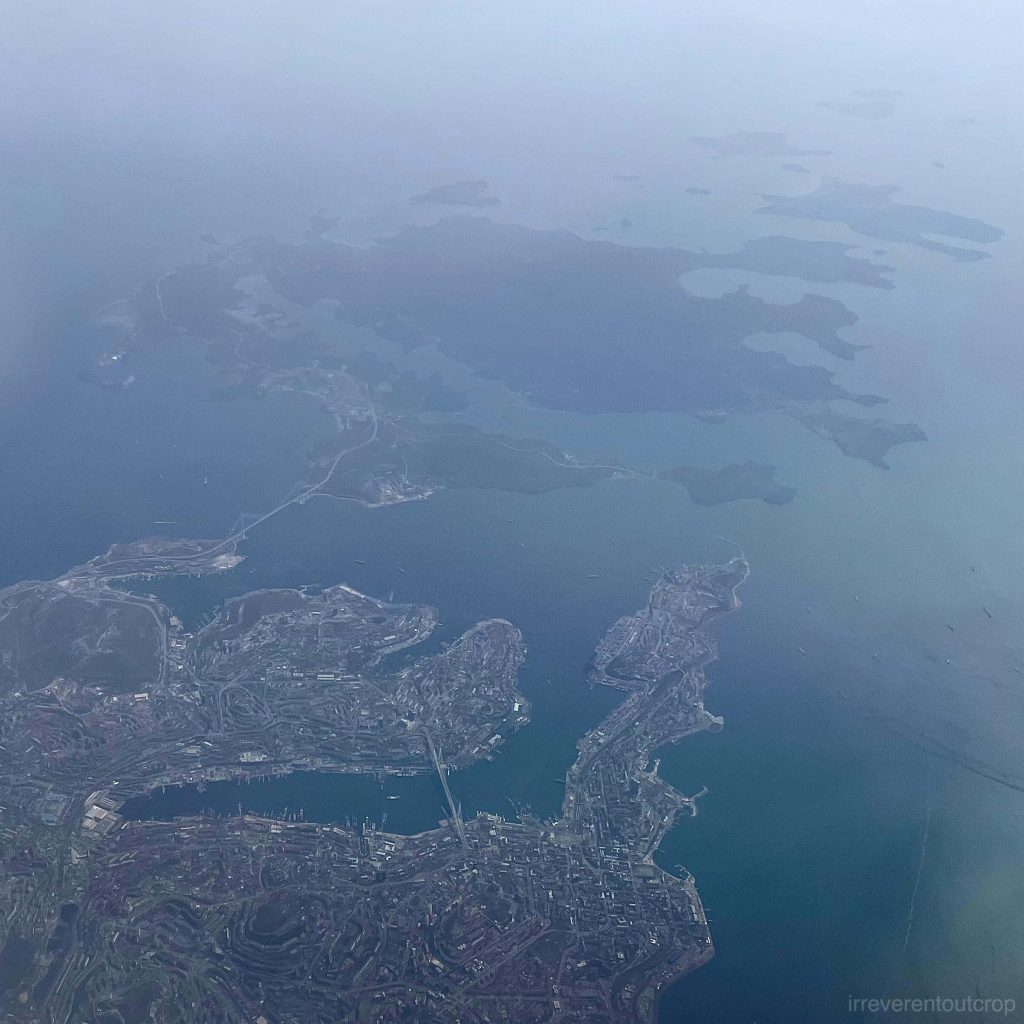
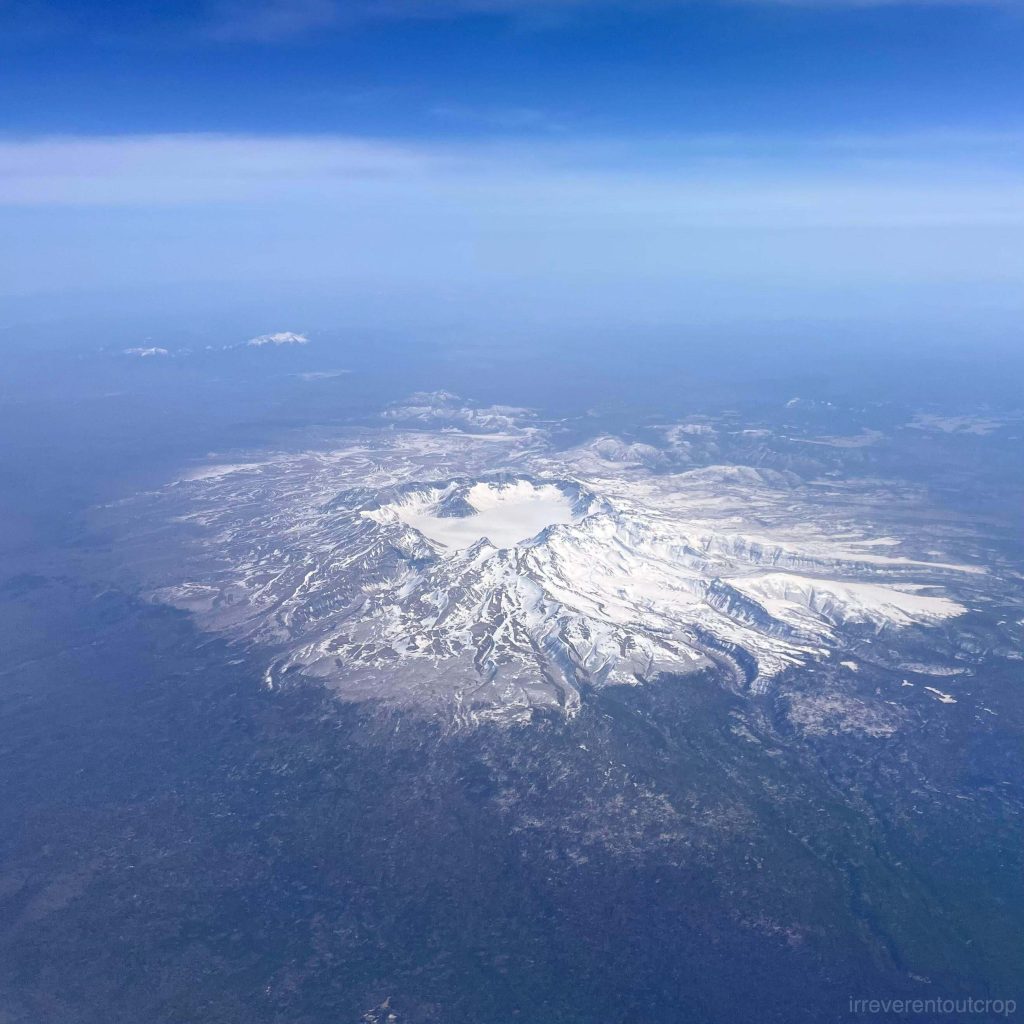
- During times of war, Russian airspace is closed to Western countries, leading to numerous trans-continental flights needing to take detours.
- Mexico charges extra overflight fees. To avoid those fees, domestic flights in southern US flying east-west would detour to avoid Mexican airspace. Therefore if we’d like to see the border on flights from California to Texas or Florida, a window seat on the south side of the aircraft would be ideal.
The GPS location of map apps can still function under flight mode. So even if there is no dynamic route displayed on seat-back TV screen, it’s possible to preload maps with terrain on mobile devices (for easy reference) then track the location under flight mode to know exactly what we are looking at outside the window.
Conclusion
In summary, when feasible and cost-effective, a window seat on the shady side offers great lighting for aerial views. When picking aisle seats for twin-aisle aircrafts, the aisle seats between the aisles would experience the least disturbance from other people.
But at the end of the day, we live in a world filled with probabilities and various variables. We can only plan to a certain point, and hope for the rest!

